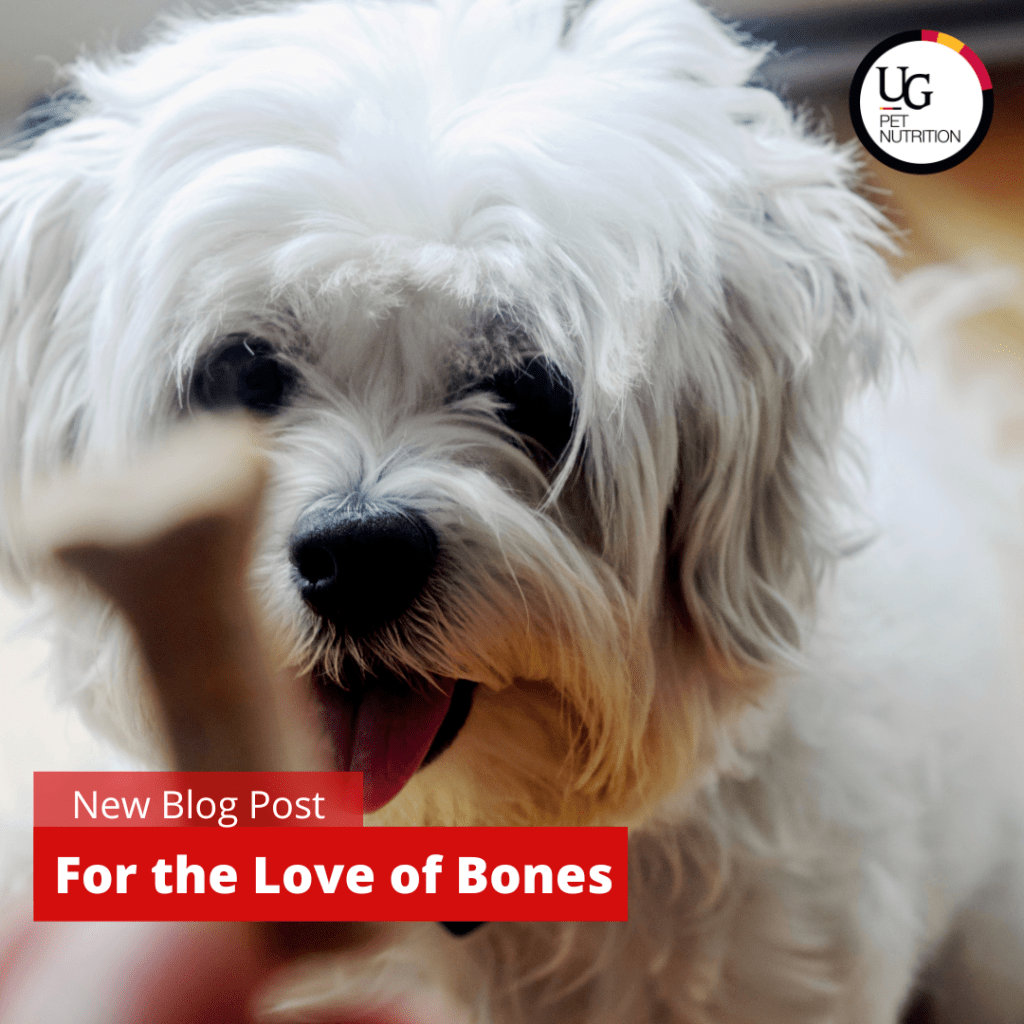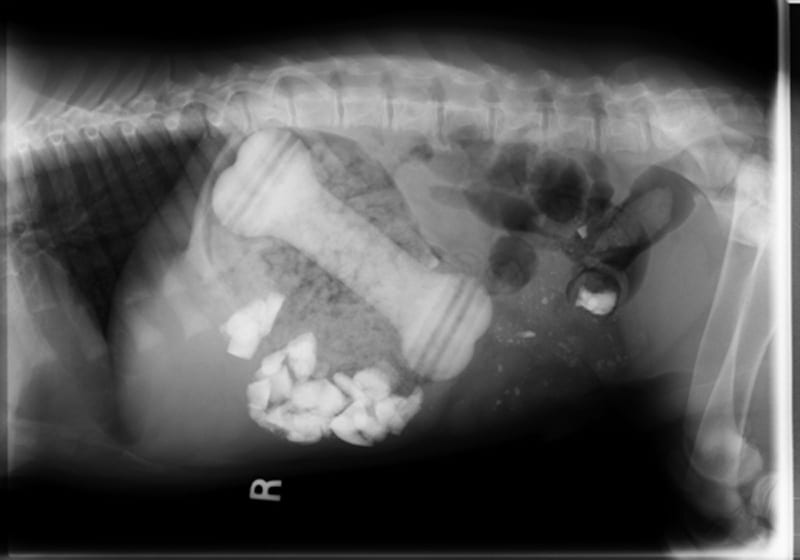
People have been giving dogs bones for centuries. In fact, it’s almost hard to imagine a world where bones aren’t closely associated with our four-legged best friends. It’s also hard to deny a dog’s excitement when they approach the bone aisle of a pet store…that aisle filled with rows upon rows of bones in all different shapes, sizes, and smells.
One non-profit organization even declared an entire week of August “Give a Dog a Bone Week”, given the long history of dogs and their love for bones. Founded by Pets of the Homeless in 2008, Give a Dog a Bone Week was initiated with the aim to ethically and legally raise funds to help feed stray animals and the pets of homeless people. It was recognized this week, the first full week of August (Aug. 6-12, 2023). But before you start handing out bones this August, let’s dive into the art of giving your dog a bone in a way that is safe, easy, and of course, tasty!
Are dog bones safe? The Pros and Cons
Dog bones on the pet food market vary drastically in their preparation, composition, palatability, and safety. The available types include rawhide chews, animal antlers/hooves/horns, meat bones, baked dog biscuits, and even nylon bones, just to name a few!
While some of these are acceptable options for your dog, others pose well-documented health risks. Below is a general list of the pros and cons associated with giving dog bones as treats (this list does not apply to every type of bone on the pet food market!).
Pros
- Promote the animal-human bond
- Perhaps the best way to your dog’s heart is through their stomach. Giving bones can be an easy way to bond with your dog, young or old.
- Enhance and diversify their diet
- Giving the occasional bone is one way to spice up your dog’s diet.
- Mental stimulation
- Chewing bones can be an interesting challenge for your dog, which is why some owners opt for bones that keep their dog busy for hours on end.
- Dental benefits
- Pinto et al.(2020) reported that beef bones were effective for removing supragingival dental calculus and reducing gingival inflammation, which may allow for longer intervals between periodontal cleaning procedures.
- Help with training
- Food-motivated dogs may respond well to being offered bones/biscuits as a positive reinforcer for good behaviour.
- Facilitate Teething
- Certain chew bones can provide teething puppies some relief from teething pains. If you’ve got a new puppy at home you can read more in our Bringing Home a Puppy Guide
- Supplement daily caloric intake
- Dogs require a certain number of calories each day depending on their weight and body condition score. For picky eaters that struggle to reach their daily energy requirement, tasty bones or biscuits may be one way to ensure they are reaching their daily caloric goal to maintain a healthy weight. Note, however, that treats that are not complete and balanced should not exceed 10% of your dog’s daily caloric intake.

Cons
- Risk of esophageal or intestinal obstruction
- Some bones can get stuck in the mouth or esophagus (choking hazard!).
- If swallowed, some bones or their fragments can also cause dangerous obstructions in the gastrointestinal tract (GIT). This is a common indication for foreign body surgery and is often considered a medical emergency.
- Along with GIT obstruction, there is the risk that ingested bones or bone fragments could splinter and perforate the stomach or intestinal wall. Not ideal!
- The clinical signs of a gastrointestinal foreign body can vary based on the degree of obstruction and location, but common signs include vomiting, abdominal pain, loss of appetite, dehydration, diarrhea (with or without blood present), and respiratory distress.
- Fractured teeth, gingival lesions
- Hard bones, such as antlers and horns, may result in broken teeth or gingival lesions. To identify if a bone is too hard, an easy test to apply is the thumbnail test. Simply press your thumb nail into the surface of the bone and notice whether there is a visible indentation in the surface of the bone. If you are unable to indent the bone’s surface, or if your nail bends in the process, then that bone is most likely too hard for your dog’s teeth and should be swapped out for a softer alternative.
- Bacterial contamination
- Bones made with raw meat-based products stand a higher chance of being contaminated with bacteria such as Salmonella spp., Listeria monocytogenes, Campylobacter spp., among others, which all pose a health and safety risk to both you and your dog.
- Plenty of bones on the pet food market contain raw meat-based products, such as raw meaty bones, rawhides, and other animal products that don’t specify that they have been cooked or treated prior to packaging.
- Obesity – if given in excess to recommended daily caloric intake
- As mentioned, dogs have a recommended daily caloric intake. While treats can be included in your dog’s daily calorie budget, it is recommended that treats such as bones and biscuits do not exceed 10% of their daily caloric intake. So, if your dog’s ideal caloric intake is 1,000 kcal per day, no more than 100 kcals per day should be in the form of treats!

Radiograph of a 3-month-old bull mastiff puppy that ate a rubber toy bone! Surgery was performed to remove the bone, and the dog made a full recovery.
Which bone is best for my dog?
Let’s look at a few of the most popular bone types in more detail so you can make an informed choice about what bone to give your dog.
Rawhides
The rawhide is a popular choice by dog owners because it can keep dogs entertained for hours on end! Rawhides are derived from the dried inner layer of skin or “hide” of livestock, which is edible animal product discarded from the meat industry. As the name suggests, rawhides are made from raw meat-based products, so they carry the risk of bacterial contamination. Rawhides are often quite durable, which is what gives them their longevity as a chew bone. They may help remove tartar and massage the gums during chewing sessions.
However, their indigestibility makes them a safety hazard as your dog’s digestive system is unable to readily break down hide into smaller particles to be absorbed or removed as waste. Consequently, pieces of rawhide that are ingested can accumulate in the GIT and cause an uncomfortable obstruction. For very soft chewers, rawhides may be safe, so long as 1) chewing sessions are carefully supervised, and 2) the size of the rawhide is large enough to not be easily swallowed whole.

cmannphoto/Getty Images Plus via Getty Images
Nylon / Rubber Bones
These are non-edible chew toys that are designed to be long-term chew options for your dog. While they mimic real bones and/or rawhides, they come with the benefit of not containing raw meat-based products (less risk of bacterial contamination!). However, be cautious since strong chewers can often accidentally ingest small pieces of nylon / rubber, which is not ideal for your dog to be consuming. Additionally, nylon bones can be made of very hard material that could put your dog at risk of a tooth fracture.
Meat Bones
We have most likely all seen our dog’s eyes widen at the sight of a fresh steak or poultry bone – however, please consider the risks of giving your dog meat bones. Cooked, brittle meat bones are known to splinter into sharp pieces that can lead to perforation of the GIT. Raw, meaty animal bones are safer than cooked bones since they do not splinter as easily, however, they could carry harmful bacteria and they also spoil quickly.
Fun Fact! Raw animal bones are often thought to be a good source of minerals, such as calcium, yet unfortunately the bioavailability of calcium from animal bones can be quite variable! It is best not to rely on animal bones as your dog’s only source of minerals, rather it is best to ensure that their regular diet is formulated with the appropriate levels of all nutrients based on life stage, to avoid potential nutritional deficiencies.
Baked Dog Biscuits
Another common classic is the baked dog biscuit; however, this is more of a quick treat rather than a hardy chewing bone. These are safe alternatives to real meat bones and rawhides since baked biscuits are not likely to cause GIT damage and contain digestible ingredients. This can be a great option for training, since these treats can typically be broken into smaller pieces and consumed in a short period of time. The downside is these biscuits will most likely not keep your dog occupied for very long, and it can be tempting to give too many! To keep your dog busy with biscuits, you can consider using food puzzles and food toys; this will keep your dog busy for longer without the risks associated with bones. Be careful not to feed an excessive number of biscuits to avoid unnecessary weight gain.
Fun Fact! You can make your own dog biscuits at home that are “complete and balanced” by using your dog’s canned wet food as “cookie batter”. Mold the wet food into any shape you want, then try baking it until it becomes a crunchy snack that will trick your dog into believing they are receiving a brand-new and exciting treat!

How can I give bones safely? Some helpful tips
- Choose appropriate bone size and type for dog based on its size and chewing style
- Avoid sharp bones, cooked bones that can splinter, and bones made of indigestible material that can be easily swallowed
- Avoid raw meat-based bones whenever possible to reduce the risk of bacterial contamination
- Supervise chewing sessions
- Discard a bone once it begins showing signs of wear
- Ensure that no more than 10% of your dog’s daily caloric intake comes from bones/treats, to avoid over-feeding
- Consider bone alternatives as a chewing option, such as dental chews, Kongs, chew toys that are made from durable material but are not too hard such that it is hard on your dog’s teeth.
- Consult with your veterinarian if you are ever worried that your dog has accidentally ingested indigestible bone material.
Remember, there are pros and cons associated with every bone/biscuit option out there. By thinking critically about the type of bone you are giving your dog, you can minimize health risks to ensure both you and your dog have a positive experience! Check out the Pets of the Homeless website if you’re interested in learning more about this organization. Happy Give a Dog a Bone week!
Written by: Lauren Brazeau, BScH, DVM Student
Reviewed by: Hannah Godfrey, BScH, MSc, PhD Candidate (Department of Biomedical Sciences)
Dr. Adronie Verbrugghe, DVM, PhD, Dip ECVCN
References:
Gastrointestinal foreign bodies. American College of Veterinary Surgeons. (n.d.). https://www.acvs.org/small-animal/gastrointestinal-foreign-bodies/
He, F., Holben, G., & de Godoy, M. R. C. (2020, May 21). Evaluation of selected categories of PET treats using in vitro assay and texture analysis. Translational animal science. https://www.ncbi.nlm.nih.gov/pmc/articles/PMC7332238/#CIT0001
Pinto, C. F. D., Lehr, W., Pignone, V. N., Chain, C. P., & Trevizan, L. (2020, February 13). Evaluation of teeth injuries in beagle dogs caused by autoclaved beef bones used as a chewing item to remove dental calculus. PloS one. https://www.ncbi.nlm.nih.gov/pmc/articles/PMC7018081/
Solís, D., Toro, M., Navarrete, P., Faúndez, P., & Reyes-Jara, A. (2022, June 23). Microbiological quality and presence of foodborne pathogens in raw and extruded canine diets and canine fecal samples. Frontiers. https://www.frontiersin.org/articles/10.3389/fvets.2022.799710/full


